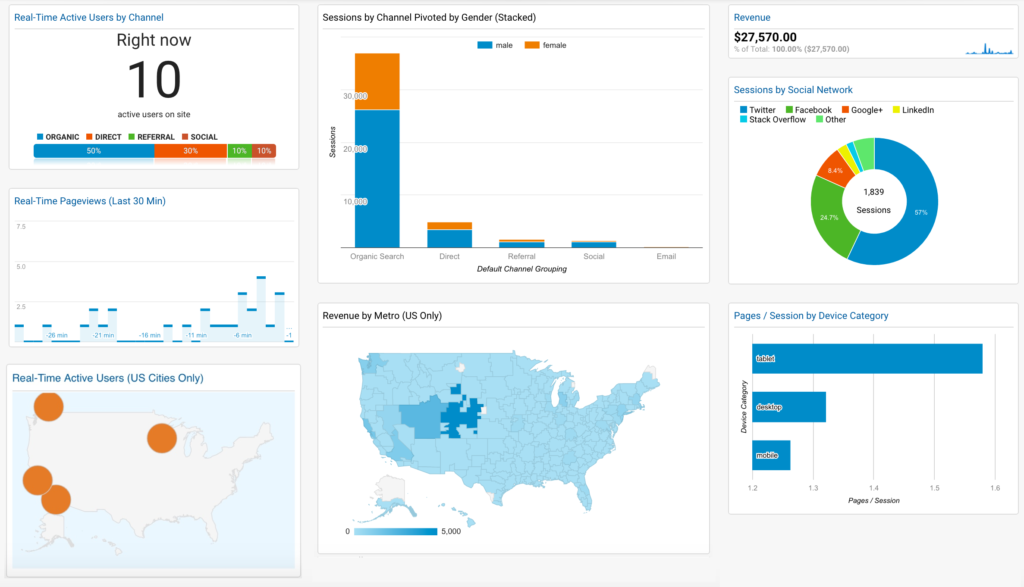Data has become the currency that drives successful business decisions. Product analytics, the process of collecting and analyzing data related to a company’s products and user behavior, is at the heart of making informed choices and optimizing product performance. One of the most potent tools in product analytics is Google Analytics, a free web analytics service offered by Google. With its inception in 2005, Google Analytics has evolved into a comprehensive platform that empowers businesses to gain valuable insights into their products, user interactions, and overall website efficiency. In this article, we will delve into the significance of product analytics using Google Analytics, explore its key features, and discuss how businesses can harness its capabilities to make data-driven decisions for improved product success.
A Brief History of Google Analytics
Google Analytics traces its origins back to the acquisition of Urchin Software Corporation by Google in April 2005. Originally known as “Urchin on Demand,” it was later rebranded as “Google Analytics” in November 2005. The acquisition marked a turning point for web analytics, making robust data analysis accessible to businesses of all sizes without complex and costly software installations.
Initially, Google Analytics provided basic features for tracking website visits, page views, and traffic sources. Over time, Google continuously enhanced the platform, adding new functionalities such as event tracking, ecommerce tracking, and goal tracking. These improvements transformed Google Analytics into a robust tool for product analytics, enabling businesses to understand user behavior and make informed decisions to improve their products and services.
Understanding Product Analytics
Product analytics is the cornerstone of data-driven decision-making for modern businesses. It involves systematically collecting, measuring, and analyzing data related to a company’s products and how users interact with them. By leveraging insights from product analytics, businesses can gain a deeper understanding of their customer’s preferences, pain points, and behaviors, enabling them to optimize products for enhanced user experiences.
Google Analytics provides a versatile platform for product analytics, offering a range of features that cater specifically to product-related insights. Through event tracking, businesses can monitor specific user interactions, such as clicks, video views, and downloads. Enhanced ecommerce tracking is particularly valuable for online businesses, allowing them to analyze crucial metrics like product impressions, add-to-cart events, and purchase conversions.

The significance of Product Analytics using Google Analytics
The importance of product analytics using Google Analytics cannot be overstated. For businesses operating in the digital realm, understanding user behavior is essential to stay competitive and meet customer expectations effectively. With Google Analytics, companies can track and measure key performance indicators, gaining actionable data that informs decision-making across various aspects of product development and marketing strategies.
One of the key advantages of Google Analytics is its accessibility. As a free web analytics service, it eliminates the financial barrier that once restricted smaller businesses from accessing advanced data analysis tools. Google Analytics democratizes data-driven decision-making, enabling businesses of all sizes to thrive in a data-centric world.
Key Features of Google Analytics for Product Analytics
Google Analytics offers a wide array of features tailored specifically to product analytics. These features empower businesses to gain comprehensive insights into their products’ performance and user interactions. Key features include event tracking, enhanced ecommerce tracking, goal tracking, user behavior flow analysis, and custom reports and dashboards.
Event tracking allows businesses to monitor specific user interactions, providing granular insights into how users engage with their products. Enhanced ecommerce tracking is especially beneficial for online retailers, enabling them to track user interactions throughout the purchase process and optimize conversion rates.
Goal tracking allows businesses to define and measure specific actions they want users to take, such as completing a signup form or reaching a particular page. This feature enables companies to evaluate the effectiveness of their product strategy and make improvements as needed.
User behavior flow analysis visually represents how users navigate through a website, highlighting potential bottlenecks and drop-off points. Custom reports and dashboards allow businesses to create personalized data views, combining various metrics and dimensions to gain a holistic perspective of product performance.
Applying Product Analytics using Google Analytics
Applying product analytics using Google Analytics spans multiple business operations scenarios. From product development and user experience optimization to marketing strategy refinement, the insights from Google Analytics inform and enrich decision-making processes.
Product analytics guides decision-making when developing new products or iterating on existing ones. Businesses can identify pain points by analyzing user behavior and feedback, understand which features are well-received, and prioritize enhancements that align with user needs.
Optimizing the user experience is critical for retaining customers and encouraging repeat usage. Through user behavior flow analysis, businesses can identify obstacles in the user journey and streamline processes for a smoother experience.
Marketing strategies thrive when fueled by data-driven insights. Businesses can allocate marketing resources more efficiently and refine messaging to resonate with target audiences by analyzing traffic sources and user engagement generated by various campaigns.
Conclusion
In the digital age, product analytics is vital to successful business operations. Google Analytics is an indispensable tool for businesses to collect, measure, and analyze data related to their products and user behavior. From its humble beginnings as Urchin on Demand to its evolution into a comprehensive web analytics platform, Google Analytics has revolutionized product analytics, empowering businesses of all sizes to make data-driven decisions for improved product success.
By harnessing the key features of Google Analytics, businesses can gain valuable insights into their products’ performance, optimize user experiences, and make informed decisions that lead to long-term growth and prosperity. In a world where data drives success, product analytics using Google Analytics has emerged as a guiding light, illuminating the path to enhanced products, satisfied customers, and sustainable business growth.
Read more about Google Analytics and its new version, GA4, here. And you can also check other Unleashing the Power of Product Analytics series tools.


